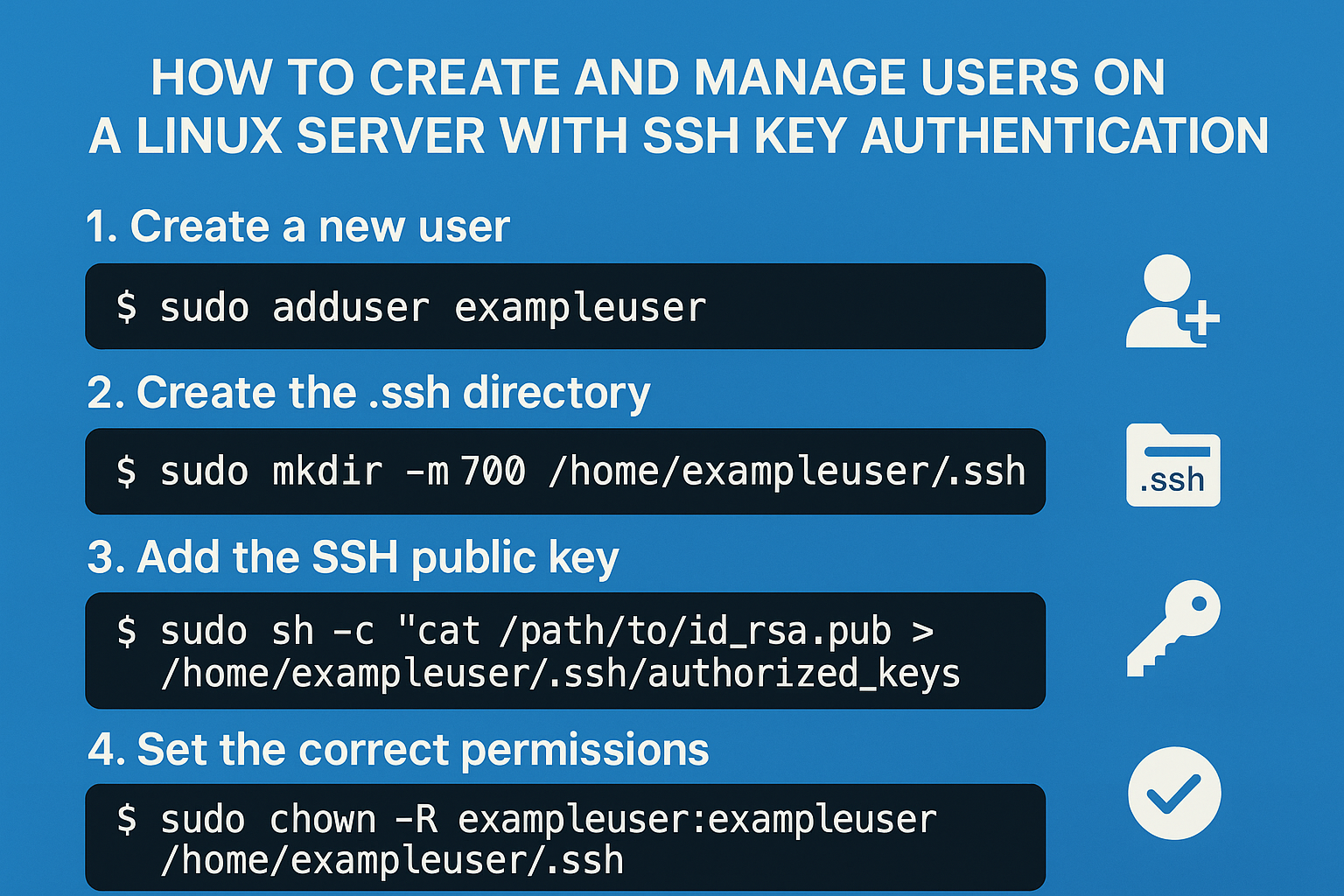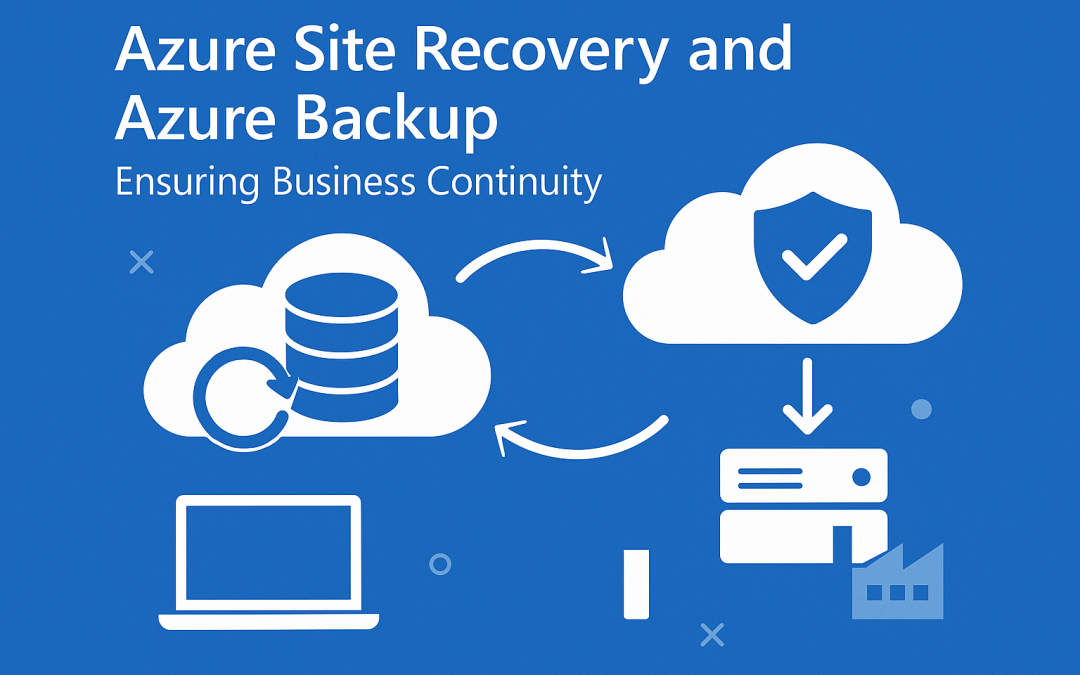
Securing your Linux server with SSH key authentication is one of the best practices for system administration. Unlike password-based logins, SSH keys provide stronger security, are resistant to brute-force attacks, and make user management more scalable. This guide walks you through creating users and setting up SSH key authentication on a Linux server.
Step 1: Create a New User
Start by adding a new user to your Linux system:
sudo adduser newuser
Follow the prompts to set the password (optional, if using SSH keys only) and basic user information.
Step 2: Add User to the Sudo Group (Optional)
If the user needs administrative rights:
sudo usermod -aG sudo newuser
Step 3: Create SSH Directory and Authorized Keys File

Log in as the new user or switch to them:
sudo su - newuser
mkdir -p ~/.ssh
chmod 700 ~/.ssh
touch ~/.ssh/authorized_keys
chmod 600 ~/.ssh/authorized_keys
Step 4: Add Public Key to authorized_keys
On your local machine, generate an SSH key if you haven’t already:
ssh-keygen -t rsa -b 4096
Copy the public key (~/.ssh/id_rsa.pub) to the server:
ssh-copy-id newuser@your-server-ip
Or manually paste the contents into ~/.ssh/authorized_keys on the server.
Step 5: Disable Password Authentication (Recommended)
To enforce SSH key-only authentication:
Edit /etc/ssh/sshd_config:
sudo nano /etc/ssh/sshd_config
Ensure the following lines are set:
PasswordAuthentication no
PermitRootLogin no
Restart the SSH service:
sudo systemctl restart ssh
Step 6: Test the Connection
On your local machine, connect to the server:
ssh newuser@your-server-ip
If the key is properly configured, you’ll be logged in without a password prompt.
User Management Tips
- List users:
cut -d: -f1 /etc/passwd - Lock a user account:
sudo usermod -L username - Remove a user:
sudo deluser username - List logged-in users:
whoorw
How to Create and Manage Users on a Linux Server with SSH Key Authentication (F.A.Q)
Can I use different SSH keys for different users?
Yes, each user can have a unique SSH key stored in their ~/.ssh/authorized_keys file.
What if I lose my SSH private key?
You won’t be able to access the server. Keep a backup key or maintain a recovery user with password login (temporarily).
How do I revoke a user’s access?
Remove their public key from ~/.ssh/authorized_keys or delete their user account.
Is it safe to disable password login?
Yes—if all users have valid SSH keys. This significantly improves security.






